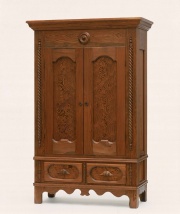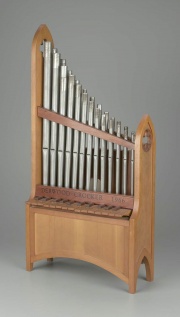Difference between revisions of "Pine"
JMcGlinchey (talk | contribs) |
JMcGlinchey (talk | contribs) |
||
| Line 51: | Line 51: | ||
* Website address 1 Comment: Museum of Japanese Traditional Art Crafts at http://www.nihon-kogeikai.com/ (Jap. term) | * Website address 1 Comment: Museum of Japanese Traditional Art Crafts at http://www.nihon-kogeikai.com/ (Jap. term) | ||
| + | * Marja-Sisko Ilvessalo-Pfäffli. ''Fiber Atlas: Identification of Papermaking Fibers'' (Springer Series in Wood Science). Springer, 1995. | ||
| − | + | * Walter Rantanen. "Fiber ID Course." Integrated Paper Services. June 2013. Lecture. | |
[[Category:Materials database]] | [[Category:Materials database]] | ||
Revision as of 11:50, 15 July 2015
Description
Any of several evergreen trees of the genus Pinus. Pine trees are widely spread throughout the temperate regions of the northern hemisphere. Their wood is soft, easy to work and has little shrinkage. Pine wood is moderately resistant to decay and insect attack. It is used for lumber and pulp make kraft paper, paper board, and book paper. Pine trees have a resinous sap which is used to make turpentine and pine tar. Examples of pine trees are: Aleppo pine, bristlecone pine, jeffrey pine, loblolly pine, longleaf pine, lodgepole pine, ponderosa pine, monterey pine, Scotch pine, slash pine, sugar pine, shortleaf pine, white pine, and yellow pine.
Synonyms and Related Terms
Pinus; fyr-slægten (Dan.); Kiefern (Deut.); Föhren (Deut.); pino (Esp., It.); pin (Fr.); den (Ned.); furu (Nor.); sosna (Pol.); pinho (Port.); tallar (Sven.); matsu (Jap.)
Other Properties
Yellow powdery pollen is released in the spring or early summer.
| Density | 25-35 ppcf |
|---|
Paper fiber type: Softwood. Using transmitted light microscopy, pine fibers are identified by the presence of pinoid or fenestriform pits. Hard pines can be distinguished by the presence of dentate ray trachieds. See individual species for specific morphological characteristics. Appearance with Graff "C" stain: varies with pulping and bleaching. Average dimensions of fibers: varies by species. Common pulping method: kraft and sulfite.
Additional Information
Schoch, W., Heller, I., Schweingruber, F.H., Kienast, F., 2004:Wood anatomy of central European Species: Common Pine,Scots Pine, Pinus silvestris L.
Additional Images
Authority
- F. H. Titmuss, Commercial Timbers of the World, The Technical Press Ltd., London, 1965
- Dictionary of Building Preservation, Ward Bucher, ed., John Wiley & Sons, Inc., New York City, 1996
- Encyclopedia Britannica, http://www.britannica.com Comment: "Pine." Encyclopædia Britannica. 14 July 2004 .
- Wikipedia, the free encyclopedia, at http://www.wikipedia.com Comment: http://en.wikipedia.org/wiki/Pine (Accessed Nov. 9, 2005)
- R. J. Gettens, G.L. Stout, Painting Materials, A Short Encyclopaedia, Dover Publications, New York, 1966
- G.S.Brady, Materials Handbook, McGraw-Hill Book Co., New York, 1971 Comment: p. 612
- Website address 1 Comment: Museum of Japanese Traditional Art Crafts at http://www.nihon-kogeikai.com/ (Jap. term)
- Marja-Sisko Ilvessalo-Pfäffli. Fiber Atlas: Identification of Papermaking Fibers (Springer Series in Wood Science). Springer, 1995.
- Walter Rantanen. "Fiber ID Course." Integrated Paper Services. June 2013. Lecture.





